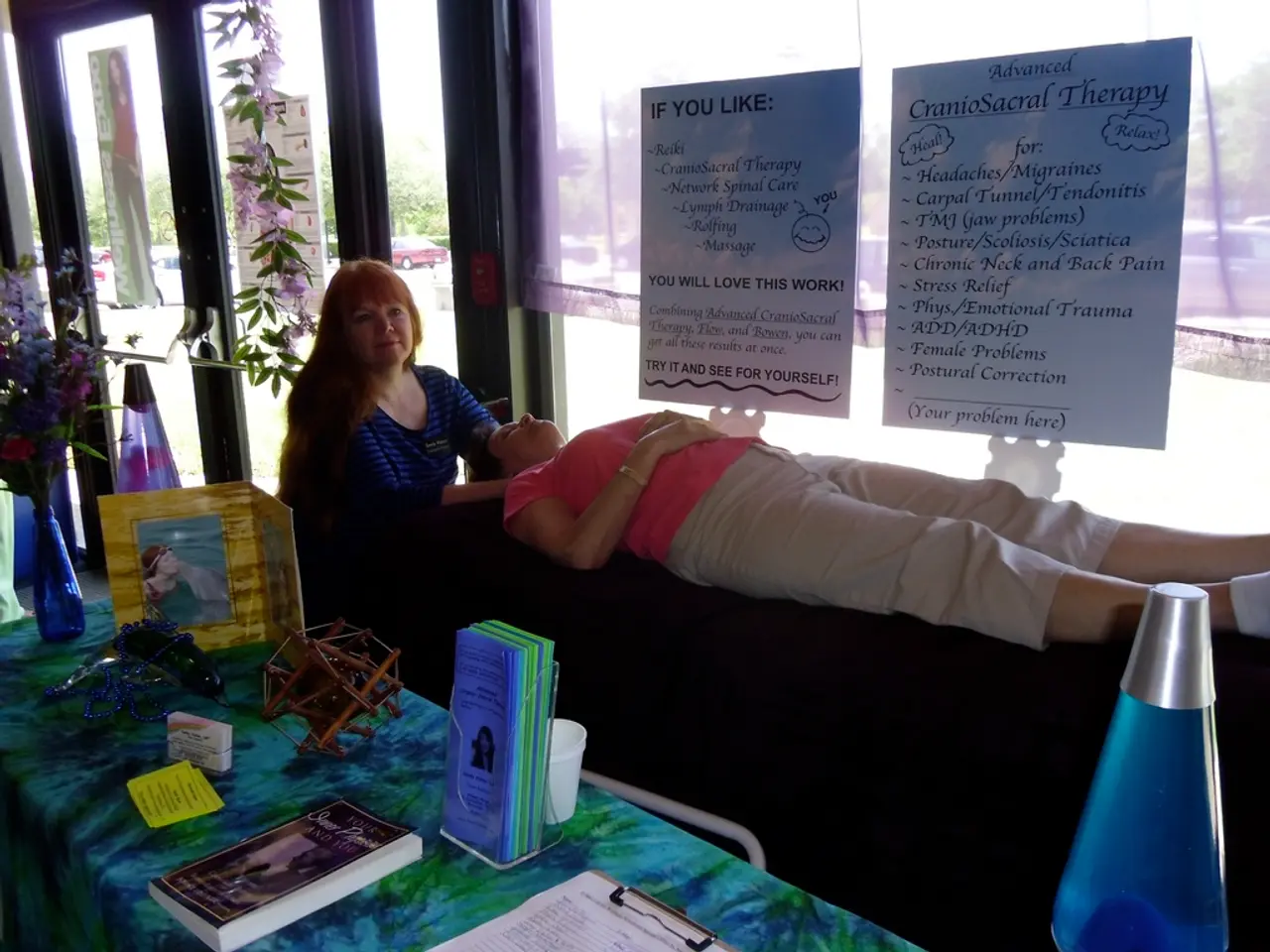Coping with PTSD-Induced Triggers: Practical Mindfulness Methods
Mindfulness techniques are proving to be a valuable resource for Gen Z and Millennial women in managing Post-Traumatic Stress Disorder (PTSD) triggers. These practices, which promote present-moment awareness and emotional regulation, have been shown to reduce the intensity and frequency of trauma-related symptoms such as intrusive thoughts and anxiety.
One of the key benefits of mindfulness is its ability to reduce anxiety and stress. By encouraging relaxation, mindfulness helps soothe the hyperarousal common in PTSD. Techniques like mindfulness meditation, deep breathing, and progressive muscle relaxation calm the nervous system, lower stress hormones, and help individuals create a sense of control during triggering episodes.
Moreover, mindfulness practices improve emotional regulation. By encouraging awareness without judgment of distressing thoughts and feelings, these techniques can decrease reactive behaviors to triggers. This is crucial for people, especially highly sensitive women common in younger generations, who may experience heightened reactivity to trauma cues.
Supporting nervous system regulation is another important aspect of managing PTSD with mindfulness. Techniques like deep breathing (e.g., 4 counts in, 6 counts out) can reset the nervous system during overwhelming moments. Establishing structured routines, which provide predictability and stability, is also important in reducing PTSD-related stress.
For Gen Z and Millennial women, who may face unique life stressors and social pressures, integrating mindfulness practices such as journaling combined with nature walks or trauma-informed yoga can foster self-compassion and gradual healing. Trauma-informed yoga, in particular, helps reestablish self-awareness and autonomy when verbal processing of trauma is difficult.
Research shows that mindfulness can increase gray matter in the brain areas responsible for memory, learning, and emotion regulation. Using apps like Headspace or Calm for guided help with mindfulness has been found to be stress-busting and mental well-being boosting.
Mindful walking, a full-body experience, has been shown to lessen PTSD symptoms. To practice mindful walking, one should head to a peaceful, secure path for a gentle stroll, move with purpose, and attune senses to each step.
Pairing mindfulness with classic therapies like Cognitive Behavioral Therapy can turbocharge PTSD recoveries. Visualization, which allows someone to mentally escape triggers and can reduce stress levels and boost mood for those with PTSD, is another practical mindfulness technique. Body scan meditation, which increases awareness of bodily sensations and helps regulate emotions, is also beneficial.
Loving-kindness meditation, which involves mentally wishing well to oneself and others, has been shown to heighten positive emotions and diminish PTSD symptoms. It involves planting oneself somewhere comfy, eyes sealed, and chanting simple phrases of good wishes, starting with oneself and extending to others.
Women are twice as likely to develop PTSD compared to men. Making mindfulness a daily staple can carve a solid habit. Social support plays a crucial role in stabilizing mental health, such as joining a mindfulness circle. Embracing difficult emotions during mindfulness practice is important, and seeking a mental health professional's guidance when in doubt is recommended.
It's important to note that triggers for PTSD can be reminders such as a song, a scent, that can cause someone to relive their past trauma. The U.S. Department of Veterans Affairs estimates that 7-8% of people may experience PTSD at some point in their lives. Mindful breathing, body scan meditation, and visualization are practical mindfulness techniques for managing PTSD triggers.
In conclusion, mindfulness is a journey towards inner peace and resilience, and getting help is perfectly okay. These techniques offer practical tools for self-soothing, reducing hypervigilance, and enhancing resilience to PTSD triggers in everyday life.
- The mindfulness techniques, such as mindfulness meditation, deep breathing, and progressive muscle relaxation, have been shown to decrease the intensity and frequency of trauma-related symptoms like intrusive thoughts and anxiety in Gen Z and Millennial women.
- By promoting present-moment awareness and emotional regulation, these practices can help individuals create a sense of control during triggering episodes, making them crucial for managing Post-Traumatic Stress Disorder (PTSD) triggers.
- Research shows that mindfulness can increase gray matter in the brain areas responsible for memory, learning, and emotion regulation, boosting mental well-being and reducing stress levels.
- Embracing difficult emotions during mindfulness practice and seeking professional guidance from a mental health professional when in doubt can help in stabilizing mental health, especially when managing PTSD triggers.




